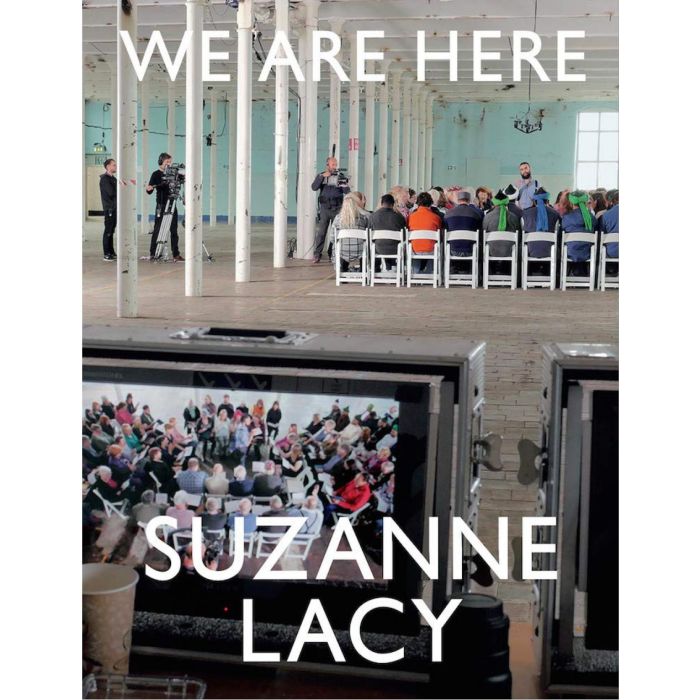My Cart
Your cart is empty
Looks like you haven't made your choice yet.
- Subtotal
Suzanne Lacy

We Are Here
- DelMonico Books (Prestel)
- by Rudolf Frieling
More Information
| Publisher | DelMonico Books (Prestel) |
|---|---|
| ISBN | 9783791358383 |
| Author(s) | Rudolf Frieling |
| Publication date | March 2019 |
| Edition | Flexi (Pb luxe) |
| Dimensions | 285 x 220 mm |
| Illustrations | 375 col.ill. |
| Pages | 288 |
| Language(s) | Eng. ed. |
Description
This generously illustrated book sheds light on Suzanne Lacy, a pioneering artist who is also a powerful educator and activist. Over the past five decades, Suzanne Lacy has created works in multiple genres, including performance, sculpture, video installations, and photography, to promote community-focused encounters that call attention to issues ranging from ageism to feminism to racial justice. These works, defined by Lacy as "social practice," often involved numerous participants interacting through spoken word and dance as well as through visual art. This monograph of the groundbreaking artist looks back on Lacy's career to highlight the many questions her work provokes. This engaging and immersive record of Lacy's career is anchored by an extensively illustrated survey of selected works, arranged chronologically into chapters that group related pieces and illuminate their core themes. The book features photographs, stills, personal ephemera, and other primary documentation, as well as texts and oral histories from critics and artists including Judy Chicago, Andrea Bowers, and Anna Halprin. A series of curatorial essays look at Lacy's interest in pedagogy, examine how her early work was experienced by its participants, consider matters of form and design in later projects, and explores how, through works such as The Oakland Projects, Lacy's process translates to public policy. Extensive, penetrating, and visually exciting, this monograph pays tribute to an artist who heroically explores social dynamics and political issues while never losing sight of art as a source of imagination and a catalyst of change.

Suzanne Lacy
